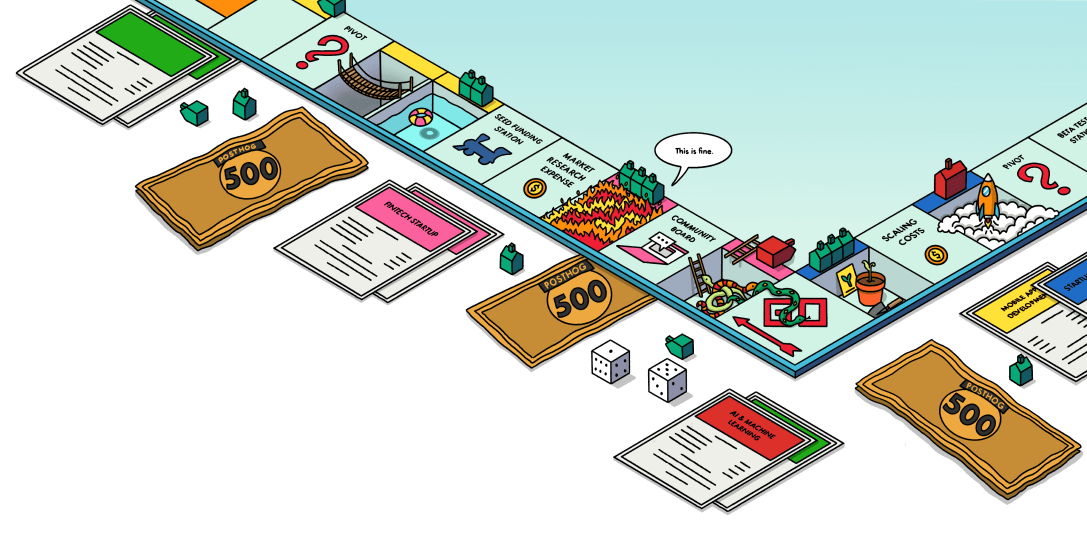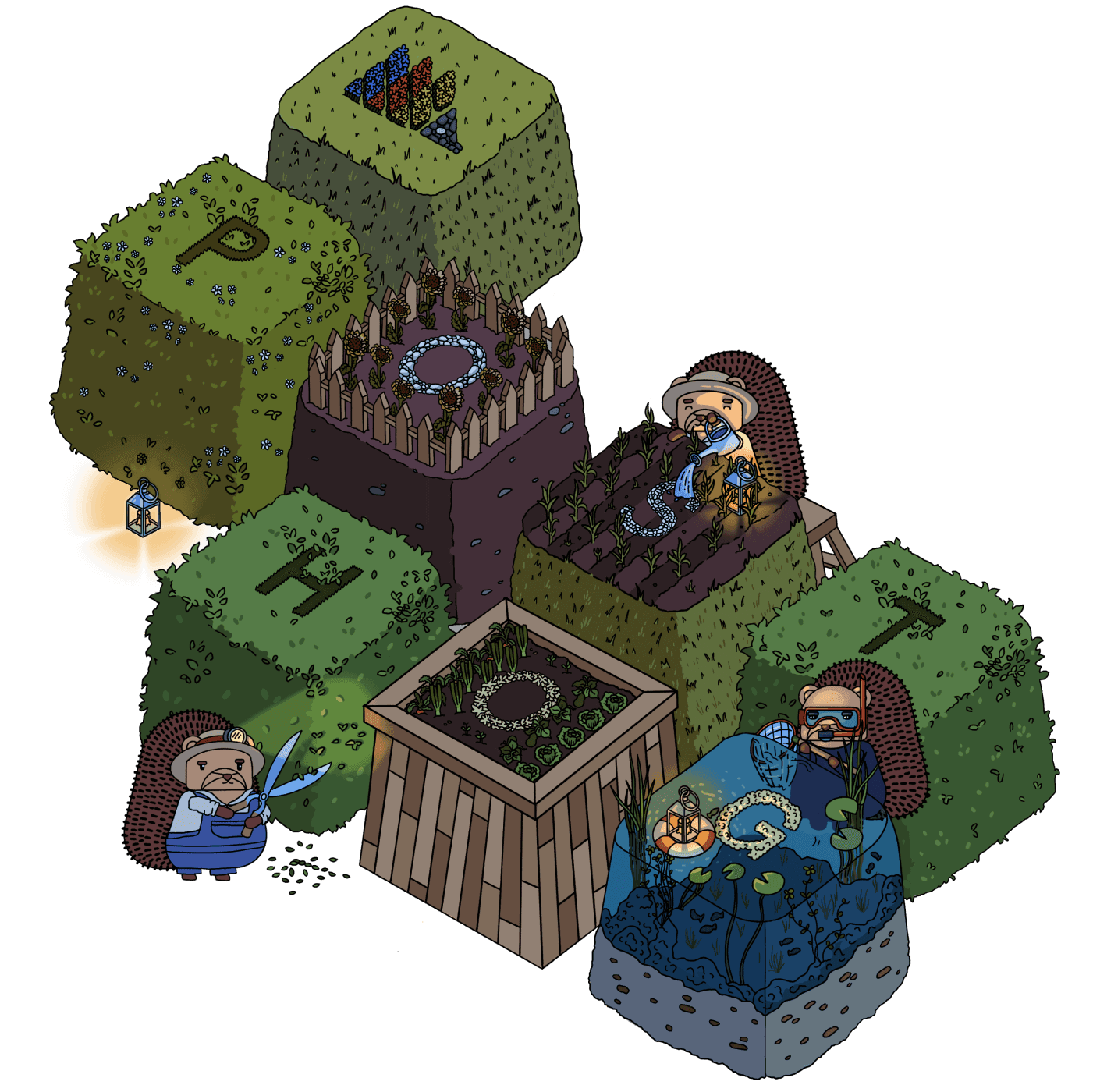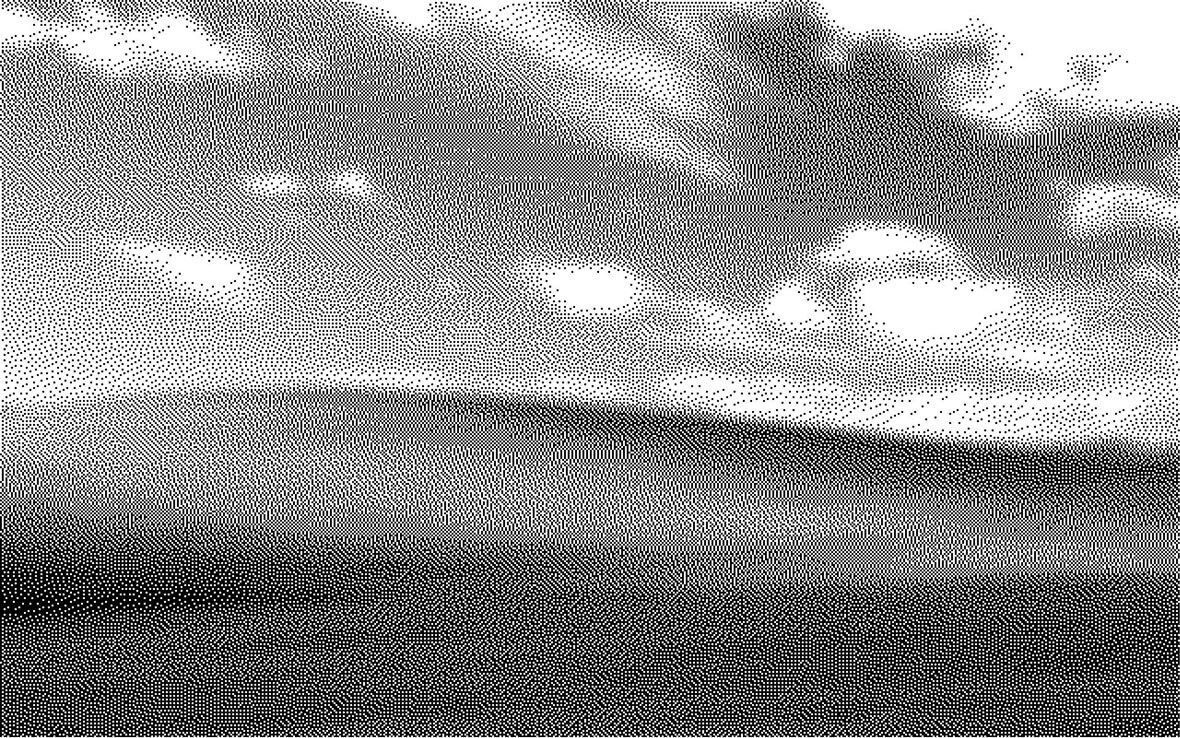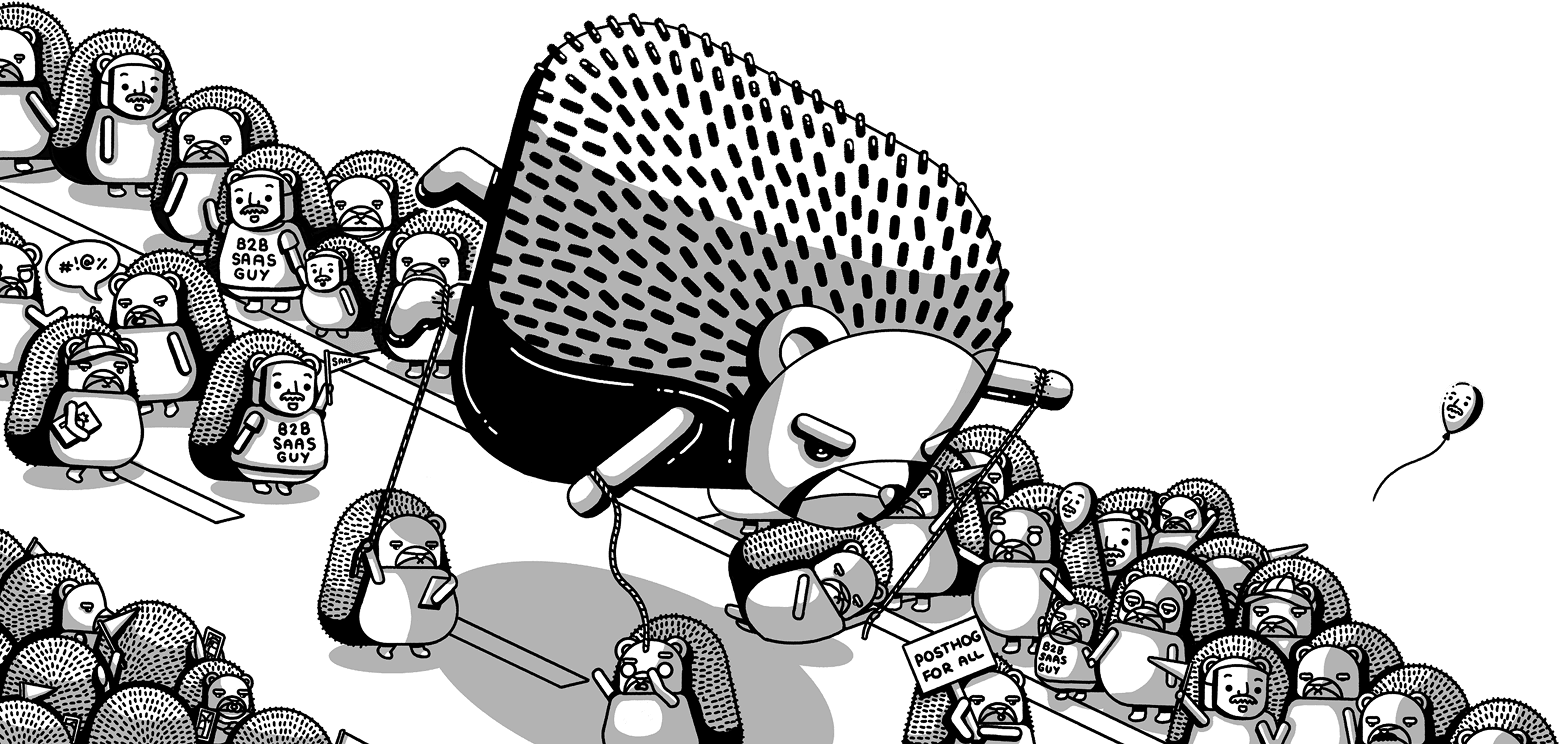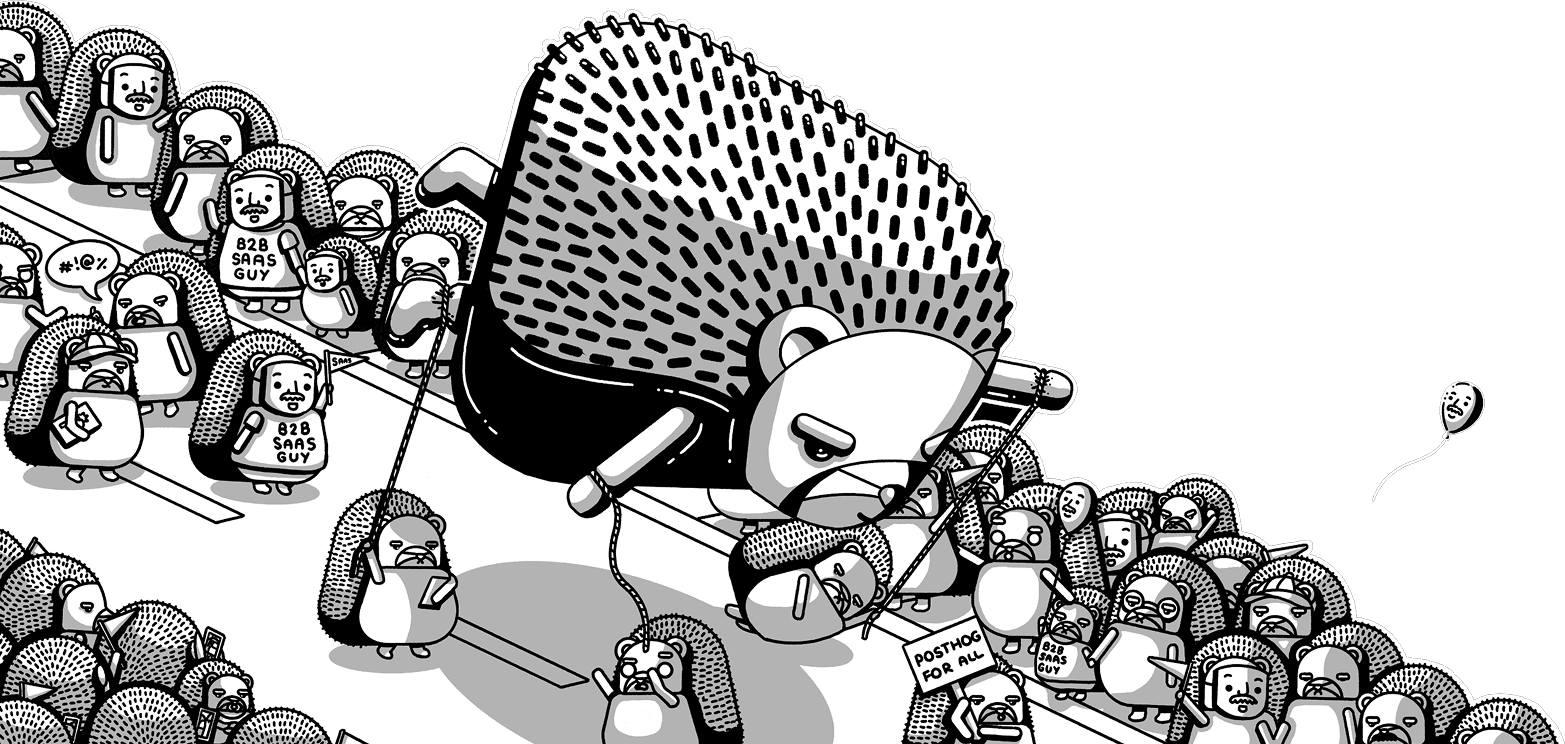JavaScript web usage
Contents
Capturing events
By default, PostHog automatically captures pageviews and pageleaves as well as clicks, change of inputs, and form submissions associated with a, button, form, input, select, textarea, and label tags. See our autocapture docs for more details on this.
If you prefer to disable or filter these, set the appropriate values in your configuration options.
Custom event capture
You can send custom events using capture:
Tip: We recommend using a
[object] [verb]format for your event names, where[object]is the entity that the behavior relates to, and[verb]is the behavior itself. For example,project created,user signed up, orinvite sent.
Tip: You can define event schemas with typed properties and generate type-safe code using schema management.
Setting event properties
Optionally, you can include additional information with the event by including a properties object:
Anonymous and identified events
PostHog captures two types of events: anonymous and identified
Identified events enable you to attribute events to specific users, and attach person properties. They're best suited for logged-in users.
Scenarios where you want to capture identified events are:
- Tracking logged-in users in B2B and B2C SaaS apps
- Doing user segmented product analysis
- Growth and marketing teams wanting to analyze the complete conversion lifecycle
Anonymous events are events without individually identifiable data. They're best suited for web analytics or apps where users aren't logged in.
Scenarios where you want to capture anonymous events are:
- Tracking a marketing website
- Content-focused sites
- B2C apps where users don't sign up or log in
Under the hood, the key difference between identified and anonymous events is that for identified events we create a person profile for the user, whereas for anonymous events we do not.
Important: Due to the reduced cost of processing them, anonymous events can be up to 4x cheaper than identified ones, so we recommended you only capture identified events when needed.
Capturing anonymous events
The JavaScript Web SDK captures anonymous events by default. However, this may change depending on your person_profiles config when initializing PostHog:
person_profiles: 'identified_only'(recommended) (default) - Anonymous events are captured by default. PostHog only captures identified events for users where person profiles have already been created.person_profiles: 'always'- Capture identified events for all events.
For example:
Capturing identified events
If you've set the personProfiles config to IDENTIFIED_ONLY (the default option), anonymous events are captured by default. To capture identified events, call any of the following functions:
identify()alias()group()setPersonProperties()setPersonPropertiesForFlags()setGroupPropertiesForFlags()
When you call any of these functions, it creates a person profile for the user. Once this profile is created, all subsequent events for this user will be captured as identified events.
Alternatively, you can set personProfiles to ALWAYS to capture identified events by default.
Identifying users
The most useful of these methods is identify. We strongly recommend reading our doc on identifying users to better understand how to correctly use it.
Using identify, you can capture identified events associated with specific users. This enables you to understand how they're using your product across different sessions, devices, and platforms.
Calling identify creates a person profile if one doesn't exist already. This means all events for that distinct ID count as identified events.
You can get the distinct ID of the current user by calling posthog.get_distinct_id().
Setting person properties
To set person properties in these profiles, include them when capturing an event:
Typically, person properties are set when an event occurs like user updated email but there may be occasions where you want to set person properties as its own event.
This creates a special $set event that is sent to PostHog. For more details on the difference between $set and $set_once, see our person properties docs.
Resetting a user
If a user logs out or switches accounts, you should call reset to unlink any future events made on that device with that user. This prevents multiple users from being grouped together due to shared cookies between sessions. We recommend you call reset on logout even if you don't expect users to share a computer.
You can do that like so:
If you also want to reset device_id, you can pass true as a parameter:
This also resets group analytics.
Alias
Sometimes, you want to assign multiple distinct IDs to a single user. This is helpful when your primary distinct ID is inaccessible. For example, if a distinct ID used on the frontend is not available in your backend.
In this case, you can use alias to assign another distinct ID to the same user.
We recommend reading our docs on alias to best understand how to correctly use this method.
Group analytics
Group analytics enables you to associate the events for that person's session with a group (e.g. teams, organizations, etc.).
Note: This is a paid feature and is not available on the open-source or free cloud plan. Learn more on the pricing page.
This is done by calling the group method with a group type and group ID.
You can also set group properties by passing a third argument to the group method.
The name is a special property used in the PostHog UI for the name of the group. If you don't specify a name property, the group ID is used instead.
Super properties
Super properties are properties associated with events that are set once and then sent with every capture call across sessions, be it a $pageview, an autocaptured button click, or anything else.
They are set using posthog.register, which takes a properties object as a parameter like this:
The call above ensures that every event sent includes a "icecream pref": "vanilla" property. This way, if you filtered events by property using icecream_pref = vanilla, it would display all events captured on that user after the posthog.register call, since they all include the specified super property.
This does not set a person or group property. It only sets the properties on events.
Furthermore, if you register the same property multiple times, the next event will use the new value of that property. If you want to register a property only once (e.g. for ad campaign properties), you can use register_once, like so:
Using register_once ensures that if a property is already set, it is not set again. For example, if the user already has property "icecream_pref": "vanilla", calling posthog.register_once({"icecream_pref": "chocolate"}) will not update the property.
Removing stored super properties
Setting super properties creates a cookie on the client with the respective properties and their values. To stop sending a super property with events and remove the cookie, you can use posthog.unregister, like so:
This removes the super property and subsequent events will not include it.
Feature flags
PostHog's feature flags enable you to safely deploy and roll back new features as well as target specific users and groups with them.
Boolean feature flags
Multivariate feature flags
Ensuring flags are loaded before usage
Every time a user loads a page, we send a request in the background to fetch the feature flags that apply to that user. We store those flags in your chosen persistence option (local storage by default).
This means that for most pages, the feature flags are available immediately — except for the first time a user visits.
To handle this, you can use the onFeatureFlags callback to wait for the feature flag request to finish:
Callback parameters
The onFeatureFlags callback receives the following parameters:
flags: string[]: An object containing the feature flags that apply to the user.flagVariants: Record<string, string | boolean>: An object containing the variants that apply to the user.{ errorsLoading }: { errorsLoading?: boolean }: An object containing a boolean indicating if an error occurred during the request to load the feature flags. This istrueif the request timed out or if there was an error. It will befalseorundefinedif the request was successful.
You won't usually need to use these, but they are useful if you want to be extra careful about feature flags not being loaded yet because of a network error and/or a network timeout (see feature_flag_request_timeout_ms).
Reloading feature flags
Feature flag values are cached. If something has changed with your user and you'd like to refetch their flag values, call:
Overriding server properties
Sometimes, you might want to evaluate feature flags using properties that haven't been ingested yet, or were set incorrectly earlier. You can do so by setting properties the flag depends on with these calls:
Note: These are set for the entire session. Successive calls are additive: all properties you set are combined together and sent for flag evaluation.
Whenever you set these properties, we also trigger a reload of feature flags to ensure we have the latest values. You can disable this by passing in the optional parameter for reloading:
At any point, you can reset these properties by calling resetPersonPropertiesForFlags:
The same holds for group properties:
Note: You don't need to add the group names here, since these properties are automatically attached to the current group (set via
posthog.group()). When you change the group, these properties are reset.
Automatic overrides
Whenever you call posthog.identify with person properties, we automatically add these properties to flag evaluation calls to help determine the correct flag values. The same is true for when you call posthog.group().
Default overridden properties
By default, we always override some properties based on the user IP address.
The list of properties that this overrides:
$geoip_city_name$geoip_country_name$geoip_country_code$geoip_continent_name$geoip_continent_code$geoip_postal_code$geoip_time_zone
This enables any geolocation-based flags to work without manually setting these properties.
Request timeout
You can configure the feature_flag_request_timeout_ms parameter when initializing your PostHog client to set a flag request timeout. This helps prevent your code from being blocked in the case when PostHog's servers are too slow to respond. By default, this is set at 3 seconds.
Feature flag error handling
When using the PostHog SDK, it's important to handle potential errors that may occur during feature flag operations. Here's an example of how to wrap PostHog SDK methods in an error handler:
Bootstrapping flags
Since there is a delay between initializing PostHog and fetching feature flags, feature flags are not always available immediately. This makes them unusable if you want to do something like redirecting a user to a different page based on a feature flag.
To have your feature flags available immediately, you can initialize PostHog with precomputed values until it has had a chance to fetch them. This is called bootstrapping. After the SDK fetches feature flags from PostHog, it will use those flag values instead of bootstrapped ones.
For details on how to implement bootstrapping, see our bootstrapping guide.
Enriched flag analytics
You can send enriched analytics data for feature flags to help uncover replays where people interact with a flag, target people who've interacted with a feature, or build cohorts of people who've viewed a feature.
To enable this, you can either use our <PosthogFeature> React component (which implements this for you), or implement it yourself.
To do it yourself, there are 3 things you need to do:
- Whenever a feature is viewed, send the
$feature_viewevent with the propertyfeature_flagset to the name of the flag.
Whenever someone interacts with a feature, send a
$feature_interactionevent with the propertyfeature_flagset to the name of the flag.At the same time, set the person property
$feature_interaction/<flag-key>to true.
See the React component for another example.
Experiments (A/B tests)
Since experiments use feature flags, the code for running an experiment is very similar to the feature flags code:
It's also possible to run experiments without using feature flags.
Early access feature management
Early access features give you the option to release feature flags that can be controlled by your users. More information on this can be found in the early access feature management guide.
Surveys
Surveys launched with popover presentation are automatically shown to users matching the display conditions you set up.
You can also render unstyled surveys programmatically with the renderSurvey method.
To disable loading surveys in a specific client, you can set the disable_surveys config option.
Surveys using the API presentation enables you to implement your own survey UI and use PostHog to handle display logic, capturing results, and analytics.
To implement API surveys, start by fetching active surveys for a user using either of the methods below:
The response returns an array of survey objects and is cached by default. To force a reload, pass true as the forceReload argument.
The survey objects look like this:
Capturing survey events
To capture survey results properly in PostHog, you need to capture 3 types of events:
Session replay
To set up session replay in your project, all you need to do is install the JavaScript web library and enable "Record user sessions" in your project settings.
For fine-tuning control of which sessions you record, you can use feature flags, sampling, minimum duration, or set the disable_session_recording config option and use the following methods:
If you are using feature flags or sampling to control which sessions you record, you can override the default behavior (and start a recording regardless) by passing the linked_flag or sampling overrides. The following would start a recording for all users, even if they don't match the flag or aren't in the sample:
To get the playback URL of the current session replay, you can use the following method:
It has two optional parameters:
withTimestamp(default:false): When set totrue, the URL includes a timestamp that takes you to the session at the time of the event.timestampLookBack(default:10): The number of seconds back the timestamp links to.
Session replay uses rrweb under the hood, which is configurable with the session_recording parameter.
The documentation and defaults for these options can be found in the rrweb docs.
The defaults are the same as in rrweb, except for these fields:
| key | PostHog default | description |
|---|---|---|
| blockClass | 'ph-no-capture' | Use a string or RegExp to configure which elements should be blocked, refer to the privacy chapter |
| ignoreClass | 'ph-ignore-input' | Use a string or RegExp to configure which elements should be ignored, refer to the privacy chapter |
| maskTextClass | 'ph-mask' | Use a string or RegExp to configure which elements should be masked, refer to the privacy chapter |
| maskAllInputs | true | mask all input content as * |
The defaults for maskAllInputs, maskTextSelector and blockSelector will change depending on your masking configuration in the session replay section of your project settings.
Error tracking
You can enable exception autocapture in the Autocapture & heatmaps section of your project settings. When enabled, this automatically captures $exception events when errors are thrown.
It is also possible to manually capture exceptions using the captureException method:
Amending or sampling events
Since version 1.187.0, you can provide a before_send function when initializing the SDK to amend, filter, sample, or reject events before they are sent to PostHog.
🚨 Warning: Amending and sampling events is advanced functionality that requires careful implementation. Core PostHog features may require 100% of unmodified events to function properly. We recommend only modifying or sampling your own custom events if possible, and preserving all PostHog internal events in their original form.
Redacting information in events
before_send gives you one place to edit or redact information before it is sent to PostHog. For example:
Redact URLs in event properties
Redact person properties in $set or $set_once
Sampling events
Sampling lets you choose to send only a percentage of events to PostHog. It is a good way to control your costs without having to completely turn off features of the SDK.
Some functions of PostHog, for example much of web analytics, rely on receiving all events. Sampling $pageview or $pageleave events in particular can cause unexpected results.
Sampling events using our provided customization
We offer a pre-built sampleByEvent function to sample by event name. You can import this using a package manager, or add the customization script to your site.
This can be used to sample events by name, distinct ID, session ID, or custom function.
Send no events while developing
When working locally it can be useful to see what PostHog would do, without actually sending the data to PostHog
Sampling by person distinct ID
We offer a pre-built sampleByDistinctId function to sample a percentage of events by person distinct ID (in the example below, 40% of events). You can import this using a package manager, or add the customization script to your site.
Note: A particular distinct ID will always either send all events or no events.
Sampling by session ID
We offer a pre-built sampleBySessionId function to sample a percentage of events by session ID (in the example below, 25% of events). You can import this using a package manager, or add the customization script to your site.
Note: A particular session ID will always either send all events or no events.
Sampling events using a custom function
If none of the provided sampling functions meet your needs, you can provide a custom function to sample events.
Chaining before_send functions
You can provide an array of functions to be called one after the other:
Blocking bad actors
PostHog tries to automatically block known crawlers and web/AI agents. It's a fact, however, that not every crawler will advertise themselves as a crawler.
If you see an unusual number of visitors in your project, you can try and understand where they're coming from by using web analytics. It's common, however, that they will all contain the exact same user agent string. You can verify the most common user agents by using this trend insight.
If a specific user agent is causing problems (many more events than other user agents), you can block it by adding it to custom_blocked_useragents in your PostHog initialization:
Lighthouse audits
Lighthouse is known for not advertising itself. If you're using a tool that uses Lighthouse to monitor your website (or if a competitor does), PostHog won't be able to prevent those events by default, which might skew your numbers. Ahrefs and Semrush are examples of this.
Lighthouse user agents are well-known but they're not blocked by default because they represent possibly legitimate users. If you're experiencing a high number of events from these sources, you can block them by adding them to your custom_blocked_useragents list in your PostHog initialization:
Removing already ingested events
Deleting already ingested events is complicated, but you can add user agents to the internal and test accounts filter in your project settings to filter them from your analytics.
Debug mode
If you're not seeing the expected events being captured, the feature flags being evaluated, or the surveys being shown, you can enable debug mode to see what's happening.
Enabling debug mode
You can enable debug mode by setting the debug option to true in the init call. A common pattern is to set this to true in development environments only using environment variables.
This will enable verbose logs about the inner workings of the SDK.
You can also call posthog.debug() in your code or in the dev console like Chrome DevTools or Firefox Developer Tools at runtime.
If you can't access or update your code, you can enable debug mode on your website by appending this query to the URL ?__posthog_debug=true.
You can try this on the PostHog website:
Exposing the posthog global object to the browser console
This has been tested in Chrome and Firefox. Safari doesn't have this feature, but other Chromium and Gecko/Firefox browsers do.
Sometimes, you may want to test PostHog directly in the browser's dev console. This lets you run commands like posthog.capture('test event') directly in the console.
The SDK will expose the window.posthog global object to the browser console on some sites, but most modern web app like React and Vue will not.
To expose PostHog in the browser:
- Enable debug mode by setting
debug: truein your config - In the browser console, search for the console log message
[PostHog.js] Starting in debug mode - Expand the logged object
- Right-click on
thisand pick Store as global variable
You can then access posthog as temp0 in Firefox and temp1 in Chrome. You can then do stuff like temp1.capture('test event') in the console.
View logs in the developer console
After enabling debug mode, you should see logs in the developer console like this:


When you reach out to support, please include debug logs from the developer console to help us diagnose the issue faster.

